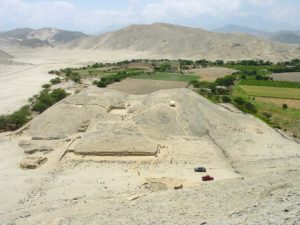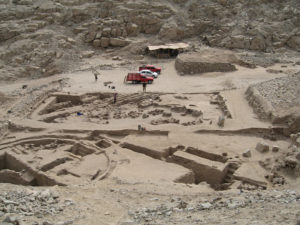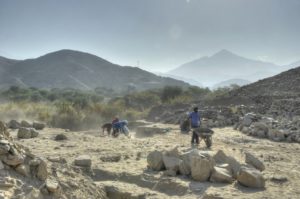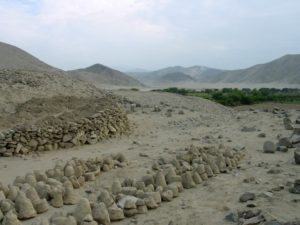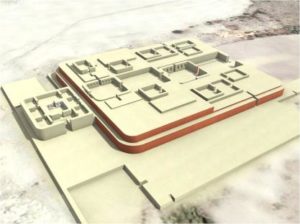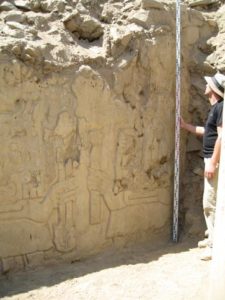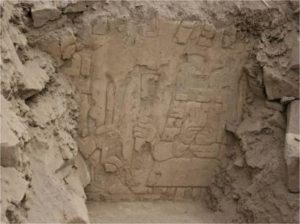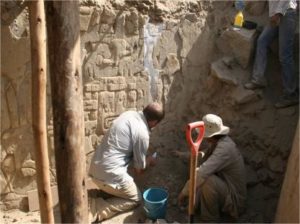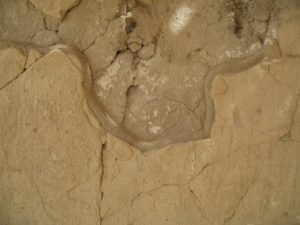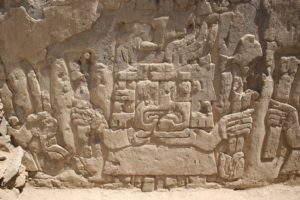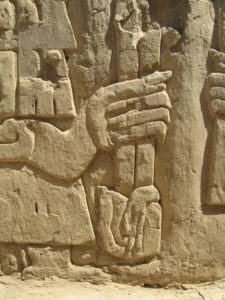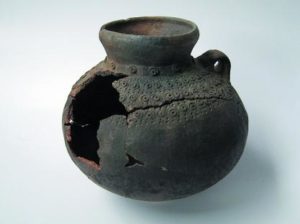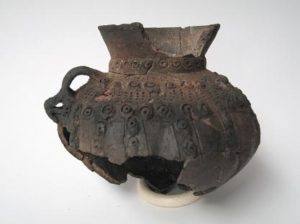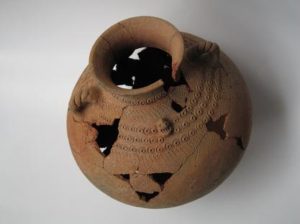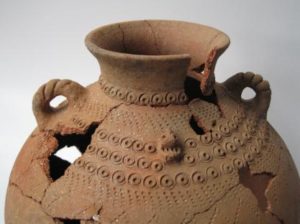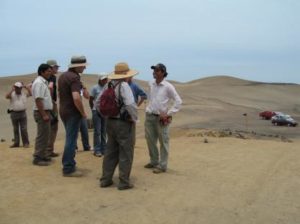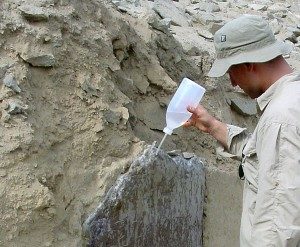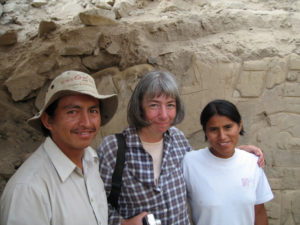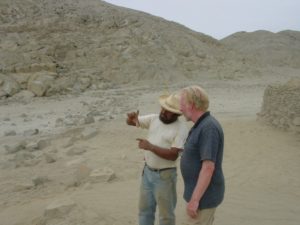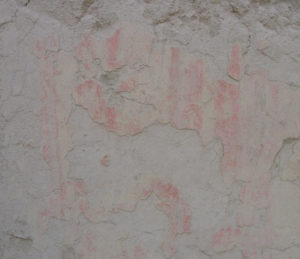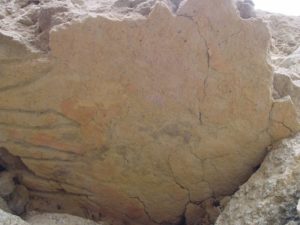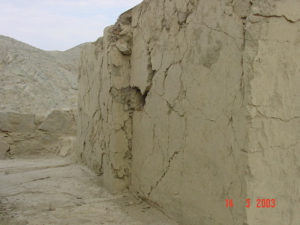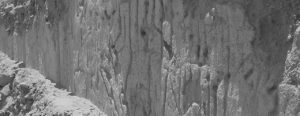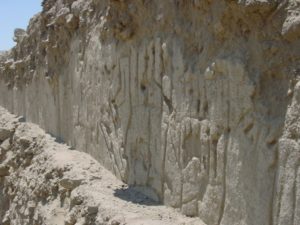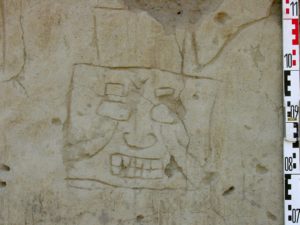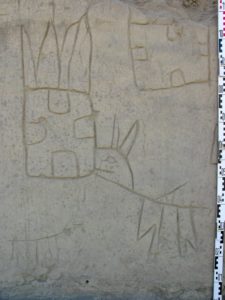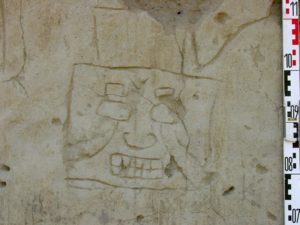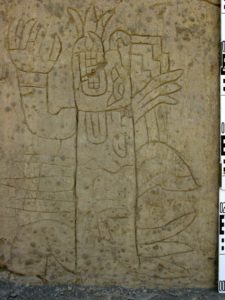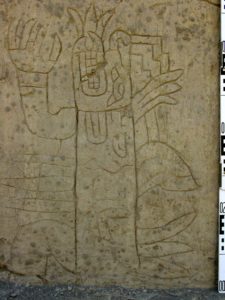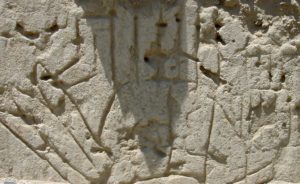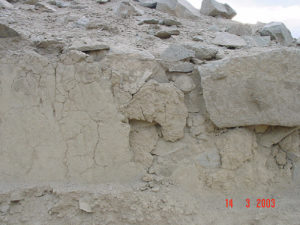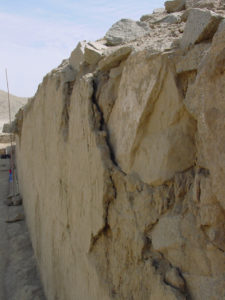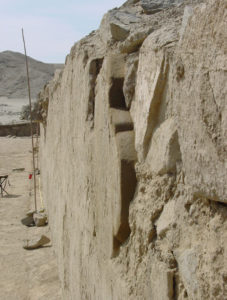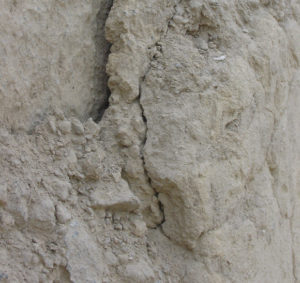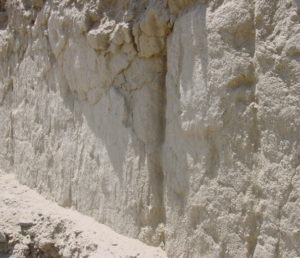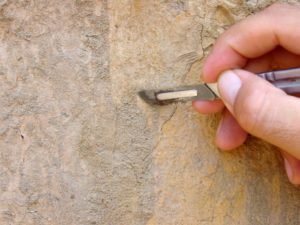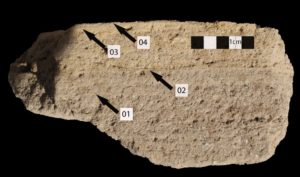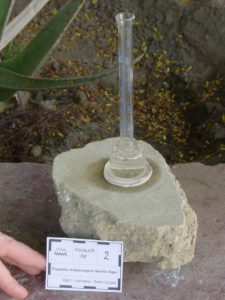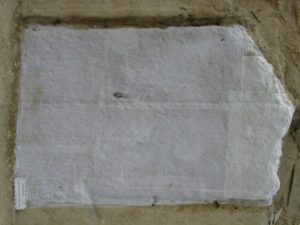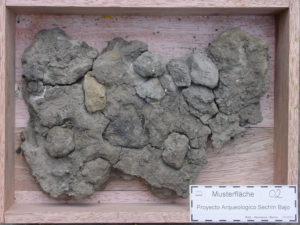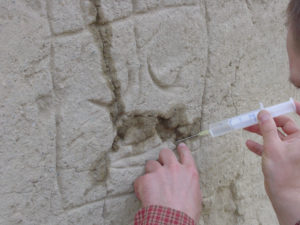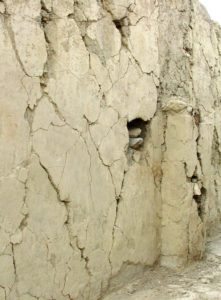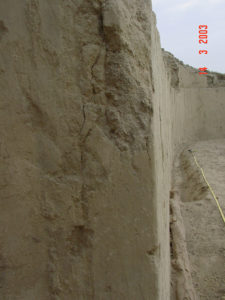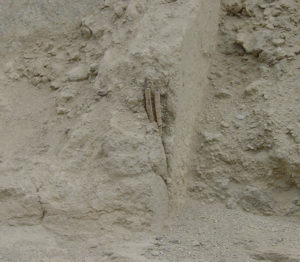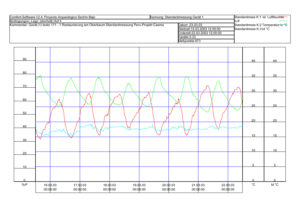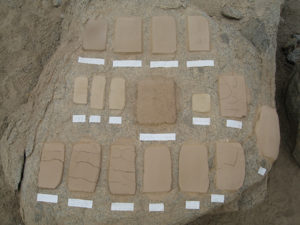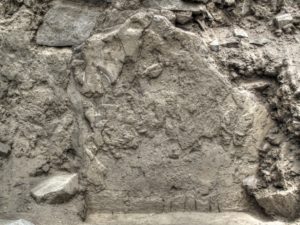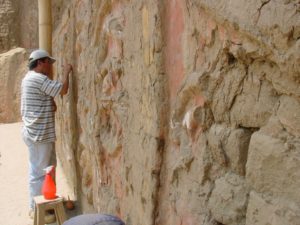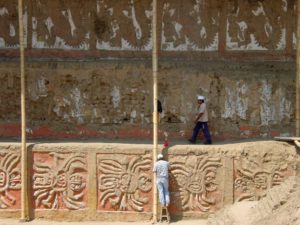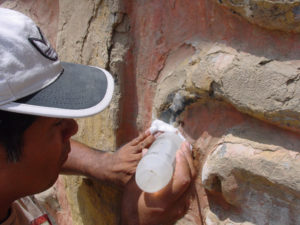Proyecto Arqueologico Sechín Bajo Casma, Peru
The Sechín Bajo Casma Archaeological Project, Peru
Methods and Techniques for Stabilizing and Securing Prehistoric Relief Friezes Made of Mud Mortar
The Casma Valley is renowned for its concentration of monumental structures. Nowhere else in Peru are there so many large building complexes in close proximity, with the oldest dating back about 5600 years. These structures mark the transition from relatively unstratified agricultural societies to centralized rule with monumental buildings – first along the coast, then in the highlands. One such monumental site is Sechín Bajo, where ongoing studies aim to provide new insights into these ancient facilities. The construction and usage period of Sechín Bajo extends from around 3700 to 1300 BC, making it the oldest known cultural building in the Americas.
Initial preparatory work at the Sechín Bajo site was carried out in 1992. Since 2000, the site has been explored in five excavation campaigns, each lasting six months, mainly funded by the DFG, Patzschke/ArchäoKontrakt, DSZ Altamerika, and Gerda Henkel Foundation. The project aims to investigate the conditions that led to the formation of these monumental building complexes in the Casma Valley, clarify the function of the site, define construction phases, provide precise measurements, and determine dates. Jörg Breitenfeldt conducted the development of conservation and consolidation methods for the mud plaster and relief friezes dating back 3600 years.
Sechín Bajo, located at the northern edge of the Rio Casma valley, spans about 30 hectares with buildings of different periods enclosed by a long wall facing the desert. The main structure, a platform complex measuring approximately 125 by 185 meters with a preserved height of about 12 meters, was examined. Geophysical measurements revealed the existence of an older building underneath, partially overlaid by later constructions.
In addition to other significant findings, a prehistoric relief frieze made of mud mortar was discovered on a temple wall. Located in the first and largest courtyard of the temple complex, the frieze was flanked by about 5-meter-high walls carefully plastered with mud. The large-scale reliefs were incorporated into this plaster. The frieze is estimated to be about 3600 to 3800 years old, depicting figures with various mythological or religious attributes, insignia, and weapons.
Upon discovery, the relief layer was in danger due to static distortions in the rubble stone masonry, hindering further research. The mud-made relief surfaces, already severely damaged by a prehistoric earthquake, were held in place by fallen rubble. Parts of the reliefs that had fallen off were found in the rubble and could be recovered. A conservation effort accompanying the archaeological excavation was urgently required.
Based on the 2003 campaign, new methods and techniques were developed and applied, allowing for reversible and non-destructive stabilization and securing of the fragile mud frieze. The complex conservation works were carried out parallel to the archaeological excavation, enabling the uncovering and securing of a connected group of figures from the relief frieze.
To protect the fragile frieze, the treated area was safeguarded by a supporting wall and filled with sand after the campaign’s completion. All steps were taken with the future in mind, ensuring that any subsequent measures, regardless of knowledge of these conservation efforts, could always be carried out, preserving the frieze in its original condition.
Project Sponsor: Free University of Berlin under the leadership of German archaeologist Dr. Peter Fuchs
Period: 2003 – 2013 (in several campaigns)
Participants:
– Dr. Peter Fuchs, Excavation and Project Leader, Latin America Institute of the Free University of Berlin
– Dipl.-Rest. Jörg Breitenfeldt M.A. (Chief Restorer)
– Renate Patzschke (M.A.), Archäo Kontrakt
– Prof. Dr. Jürgen Golte, Latin America Institute of the Free University of Berlin
– Dipl.-Geologist Bernhard Lorenz, Office for Geophysics Lorenz, Berlin
– German Research Foundation (DFG)
– Gerda Henkel Foundation
– Latin America Institute of the Free University of Berlin


